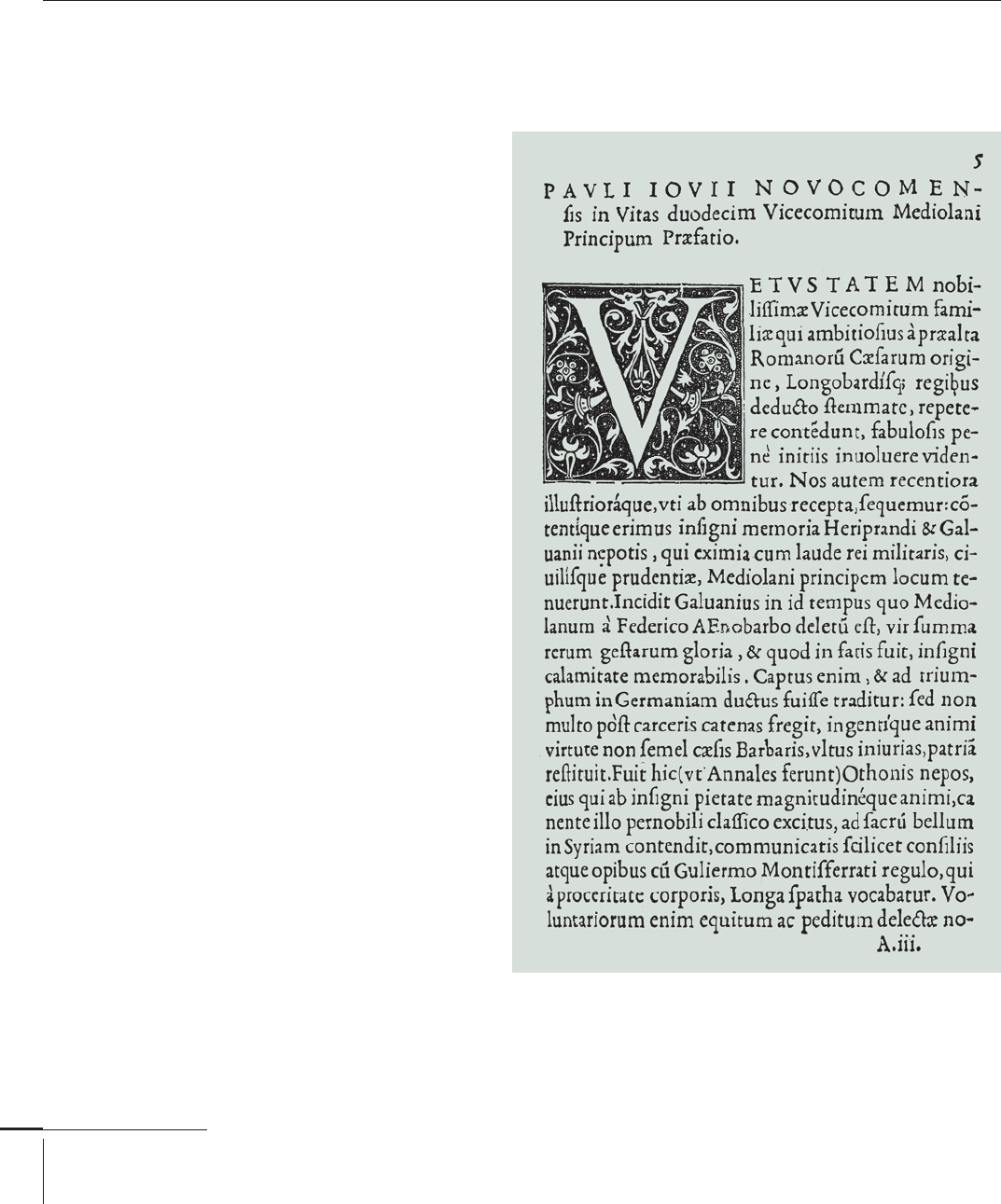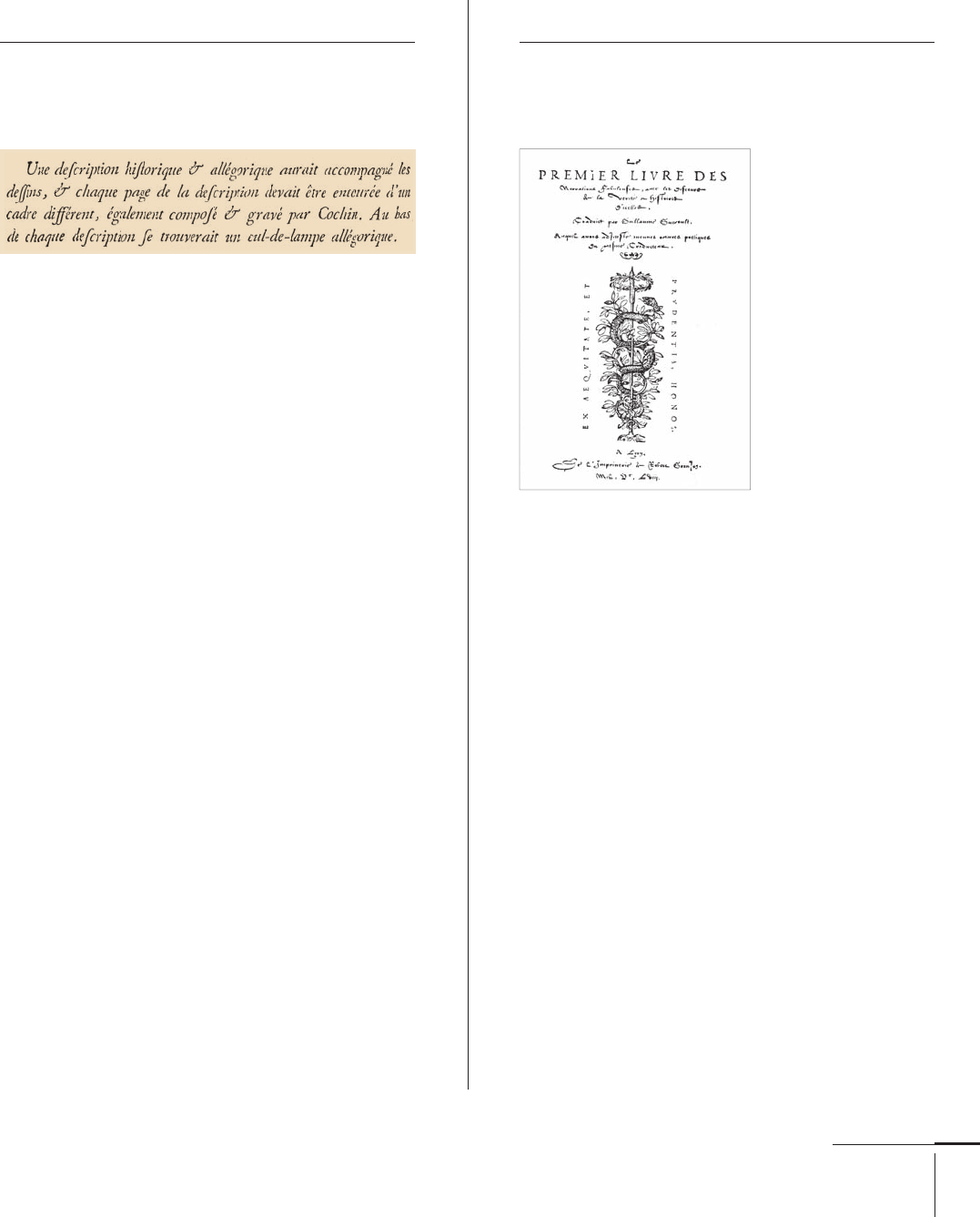
Job:03171 Title:Typography Referenced (Rockport)
Page: 73
068-121 03171.indd 73 9/22/11 4:54 PM
Type Designers
Text
Job:03171 Title:Typography Referenced (Rockport)
Page: 73
Didot, 1801
Firmin Didot
French, –
Typeface: Didot (1784)
The Didot family of Paris was involved in every aspect
of publishing, printing, type design, punchcutting, and
paper manufacturing during the late-eighteenth and
early-nineteenth centuries. Firmin Didot, grandson of
the founder, is historically known as the most important
member of this family because he is commonly thought to
have produced the fi rst Modern typeface.
In , at the age of nineteen, Didot took control of his
father’s type foundry. The following year, he produced
the fi rst Modern typeface characterized by thin, slab-
like, unbracketed serifs, a marked vertical stress, and an
abrupt transition from thick to thin strokes. During this
same time period, the Didots began reproducing these
typographic details for the fi rst time by using wove paper
and an improved printing press. As a result of these
developments, Didot (161) became the prevalent book type
used throughout France during the nineteenth century
(12). It is still in use today.
Pierre Simon Fournier, also known as Fournier le
jeune, was the youngest son of the Fournier printing
family. At an early age, he developed an interest
in engraving woodblocks and large capitals before
moving on to punchcutting and type design.
In , he established his own foundry in Paris,
where he cut and designed more than typefaces
and typographical ornaments, and developed the
idea of the type family. In , he published the
fi rst version of his standardized system of type
measurement—the point—and in , published his
fi rst type specimen book.
Fournier’s typefaces were infl uenced by the
Romain du Roi cut by Philippe Grandjean (75) in
and by the narrow proportioned letterforms
predominantly used at that time by printers and
publishers in Holland and Germany. Fournier
designed one of the fi rst early Transitional (55)
typefaces, St. Auguston Ordinaire, which served as
the model for Monotype’s Fournier released in .
Pierre Simon Fournier
French, –
Typefaces: Fournier (1742), Narcissus (1745)
Fournier, 1766
068-121 03171.indd 73 9/22/11 4:54 PM

Job:03171 Title:Typography Referenced (Rockport)
Page: 74
068-121 03171.indd 74 9/22/11 4:54 PM
Typography, Referenced
Text
Job:03171 Title:Typography Referenced (Rockport)
Page: 74
Claude Garamond
French, –
Typefaces: Garamond (circa 1530), Grecs du Roi (circa 1549), Granjon (1561)
Claude Garamond was the
fi rst to sell fonts of his type
to others as a business. He
also was the fi rst designer
to create typefaces, cut
punches (used to make letter
molds), and sell the type
produced from the punches.
Unfortunately, though
many bought and used his
fonts, Garamond had little
lasting fi nancial success in
this business. In fact, when
he died, he owned little
more than his punches, and
shortly after his death his
widow was forced to sell
even those. Thus began
the time-honored tradition
of type designers creating
beautiful tools for others to
use profi tably.
On the plus side,
Garamond was the most
distinguished type designer
of his time, perhaps of
the entire Renaissance
period. He worked with
several punchcutters before
starting a career of his own
in the early s in Paris.
He designed many roman
typefaces, including two
italics, and a full set of
chancery Greeks.
In the late s, French
printer and classical
scholar Robert Estienne
commissioned Garamond
to cut typefaces for several
publications, including the
edition of Paraphrasis
by Erasmus. Following
the positive reception and
success of Garamond’s
roman typeface, which he
based on one designed by
Aldus Manutius (78) for
a edition of de Aetna,
Garamond was asked by
King Francois I of France
to design a Greek typeface
for his exclusive use, now
known as Grecs du Roi.
By the end of the
sixteenth century (10)
Garamond’s roman
typeface had become the
standard European style. It
was still in use years
later. In the beginning of the
twentieth century (16), new
versions of Garamond (162)
style begin to appear again
in print shops.
Garamond, 1549
068-121 03171.indd 74 9/22/11 4:54 PM

Job:03171 Title:Typography Referenced (Rockport)
Page: 75
068-121 03171.indd 75 9/22/11 4:54 PM
Type Designers
Text
Job:03171 Title:Typography Referenced (Rockport)
Page: 75
Philippe Grandjean
French, –
Typeface: Romain du Roi (1705)
The Romain du Roi designed by Philippe Grandjean in
marked a signifi cant development in typography
history: It was the fi rst new typographic development
that diverged from the Old Style () typefaces prevalent
throughout Europe during this time period. Therefore it’s
identifi ed as the fi rst Transitional () typeface.
Philippe Grandjean de Fouchy was born in . As a
young man in Paris, he visited a printing offi ce by chance,
which led him to design a set of type capitals. A member
of the Royal Court saw Grandjean’s early attempts, recom-
mended him to Louis XIV, and subsequently, Grandjean
started working for the Imprimerie Royale.
In , Louis XIV appointed a committee to draw up
plans for a new typeface that would become the exclu-
sive property of the Imprimerie Royale. The committee
studied typefaces then in current use, historical man-
uscripts, and geometric principles. The outcome of this
extensive study became the typeface Romain du Roi
translated as the “King’s Roman.” Grandjean was
assigned to cut this new typeface, which took him eight
years from until , and ultimately established
his reputation.
Grandjean’s Romain du Roi remained popular
throughout the eighteenth century (), and despite
its protection under the King’s law, was extensively
copied, most notably by Pierre Simon Fournier ()
and Firmin Didot ().
Romain du Roi,
Robert Granjon
French, –
Typeface: Parnagon de Granjon (circa 1550)
Granjon,
Robert Granjon was a French punchcutter and type
designer who, during the course of his career, worked in
Paris, Lyon (France), Antwerp (Belgium), Frankfurt, and
Rome. He designed many Renaissance and Mannerist
Romans, italics, Greeks, a Cyrillic, Hebrews, and the fi rst
successful Arabic typeface.
His most notable contribution to typeface design was
his italic type, Parnagon de Granjon, which possessed
a greater slant angle, slanted roman capitals, and a
reduced weight. These characteristics, as well as an
extreme contrast () between its thick and thin strokes,
gave it a beautiful appearance but sacrifi ced legibility
() and readability (). Nevertheless, Granjon’s italic
was the primary infl uence for italic typeface design until
revival of the Arrighi model in . (Arrighi’s italic
typeface [circa ] derived from Renaissance Italian
handwritten scripts known as cursiva humanistica.)
Matthew Carter () based his typeface Galliard primarily
on the historical forms of Granjon’s romans and italics.
068-121 03171.indd 75 9/22/11 4:54 PM

Job:03171 Title:Typography Referenced (Rockport)
Page: 76
068-121 03171.indd 76 9/22/11 4:54 PM
Typography, Referenced
Text
Job:03171 Title:Typography Referenced (Rockport)
Page: 76
Francesco Griff o
Italian, unknown–
Typefaces:
Bembo (1495),
Poliphilus (1499),
Griff o Classico (1501)
Francesco Griff o was a Bolognese punchcutter who worked mostly
in Venice. Aldus Manutius () commissioned him to design several
typefaces, the most important of which is now revived under the
name Bembo (). The basis for the typeface came from Pietro
Bembo’s de Aetna, printed by Manutius in a font Griff o designed.
Griff o also created several romans, three italics (discussed below),
four Greeks, and a Hebrew. Though we don’t know what happened to
his original punches or matrices—none of them survived—printers
and type designers have reconstructed the majority of his letterforms
by looking at printed books in which his type appeared. Examples
include Giovanni Mardersteig’s Griff o type, an exact replica of one
of Griff o’s fonts; Monotype’s Bembo Roman, also loosely based
on this same font; and Monotype’s Poliphilus, a reproduction of the
same lowercase () with slightly diff erent caps.
Manutius and Griff o generally get credit for the invention of
italic type. It made its fi rst appearance in a edition of Virgil
based on a script used by the Papal Chancery. Griff o also designed
two other italics, one for the printer Geronimo Soncino for his
book Petrarch of , and one for himself. Griff o used the latter
when, after Manutius’s death, he published small editions on
his own in his native Bologna. Though the pair had a successful idea,
later designers followed other models for their italics.
Jean Jannon
French, –
Typefaces: Jannon Antiqua,
Sarabande (1621)
French punchcutter, type designer, and
printer Jean Jannon was born in in
Sedan, a northern province of France.
Jannon studied and trained in Paris with
Robert Estienne, a French classical scholar
and printer. He fi rst worked as a punchcutter
and printer at the Protestant Academy in
Sedan, where in he developed his fi rst
type specimen, Caractères de l’Université.
Subsequently, Jean Jannon’s roman
typefaces were used by the Imprimirie Royal
and in an edition of Cardinal Richelieu’s
memoirs in . These typefaces are
considered the fi rst Baroque typefaces.
Because of his religious beliefs as a
Protestant, Jannon continually got into
trouble with the Catholic government
of France. On one such occasion, the
government confi scated his fonts. These
eventually found their way into the French
National Printing Offi ce, where they
remained in obscurity for more than
years. In the twentieth century (), they
were mistakenly used as a basis for the fi rst
revival of Garamond’s () type.
Jannon,
Griff o
Italics,
068-121 03171.indd 76 9/22/11 4:54 PM

Job:03171 Title:Typography Referenced (Rockport)
Page: 77
068-121 03171.indd 77 9/22/11 4:54 PM
Type Designers
Text
Job:03171 Title:Typography Referenced (Rockport)
Page: 77
Nicolas Jenson
French, –
Nicolas Jenson studied punch-
cutting, printing, and typography
in Mainz, the German birthplace
of typography, before establish-
ing his own press in Venice. He
was one of the fi rst printers to
use type based on the traditional
roman letter model rather than the
dark Gothic type found in earlier
German printed books. His early
roman letterforms have strong
vertical stems, and the transition
from thick to thin refl ects the path
of a broad-nibbed pen.
Born in France’s northeastern
district of Sommevoire in ,
Jenson initially apprenticed in the
Paris Mint before being promoted
to master of the mint in Tours.
In , Charles VII sent him to
Mainz to learn more about the
new invention of printing. His
roman type, fi rst used in
in Eusebius’s De Praeparatio
Evangelica, was designed
specifi cally to typographic ideals
and in rejection of prevalent
manuscript models. From
until his death in , Jenson
lived and worked in Venice.
This designer’s roman
greatly infl uenced printing and
typography during its revival
in the late-nineteenth () and
twentieth centuries (). Those
typefaces modeled after his
include Bruce Rogers’s ()
Montaigne (), Morris’s Golden
(), and Robert Slimbach’s ()
Adobe Jenson ().
Jenson,
Jenson,
068-121 03171.indd 77 9/22/11 4:54 PM
..................Content has been hidden....................
You can't read the all page of ebook, please click here login for view all page.
